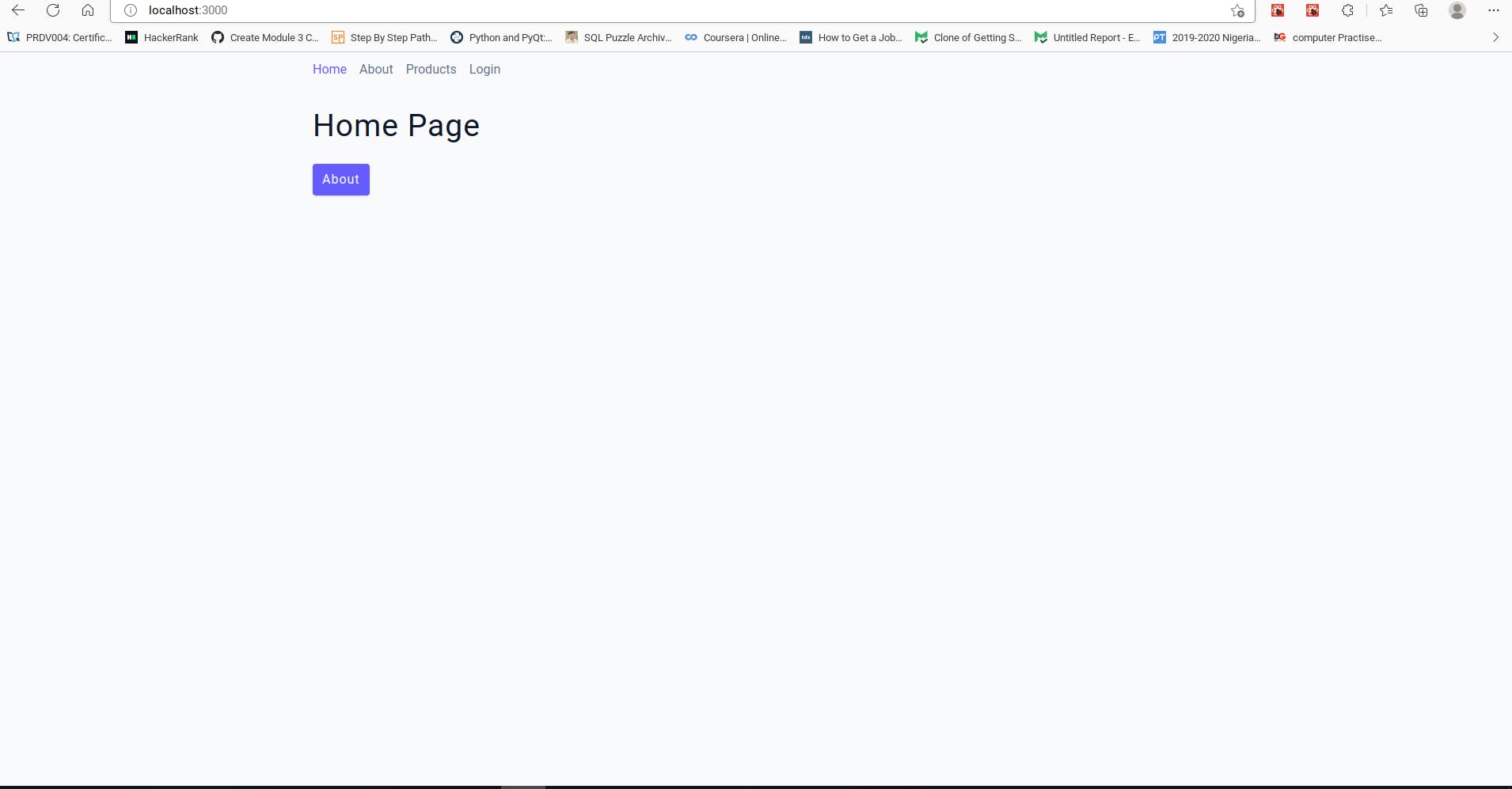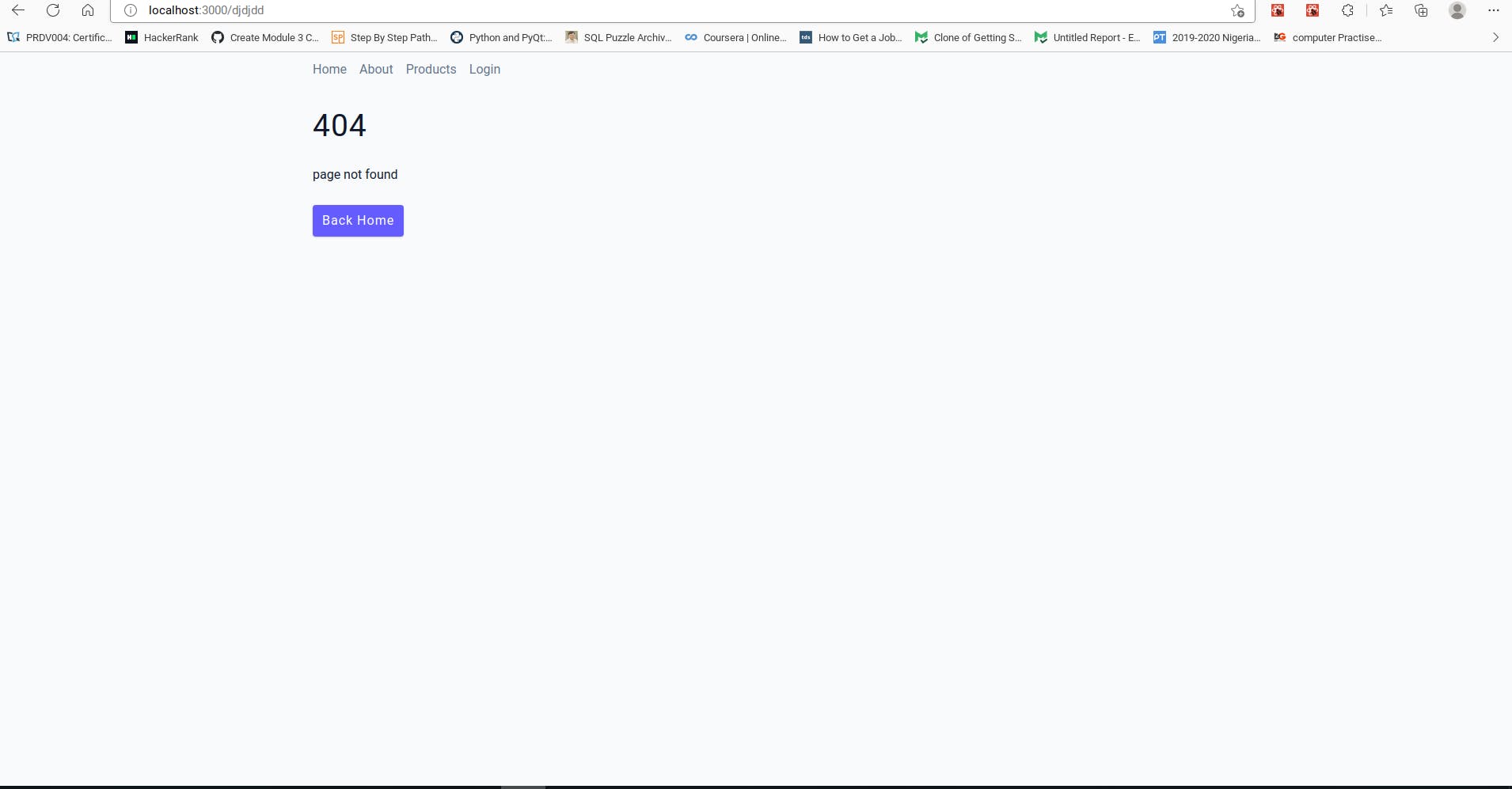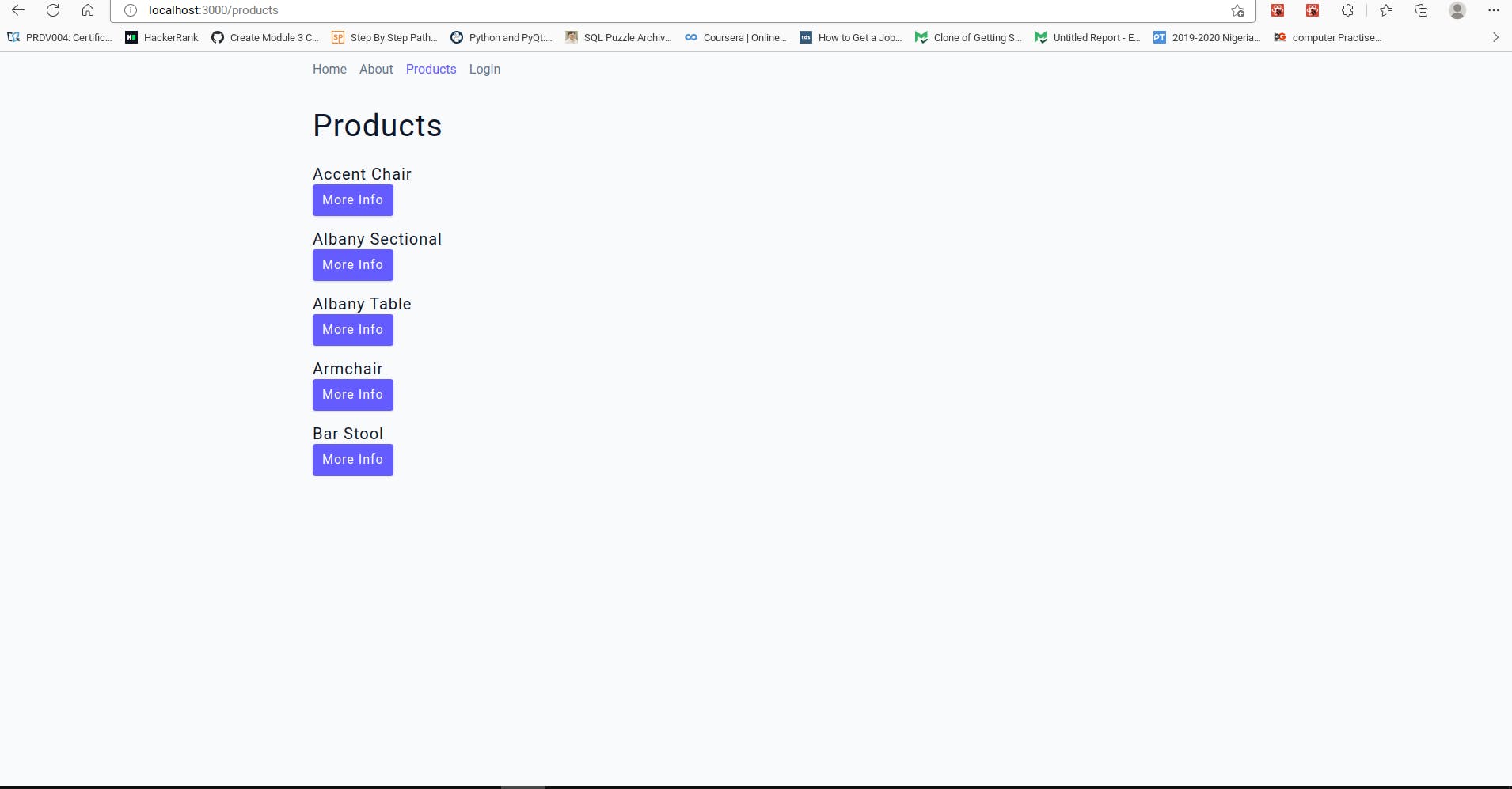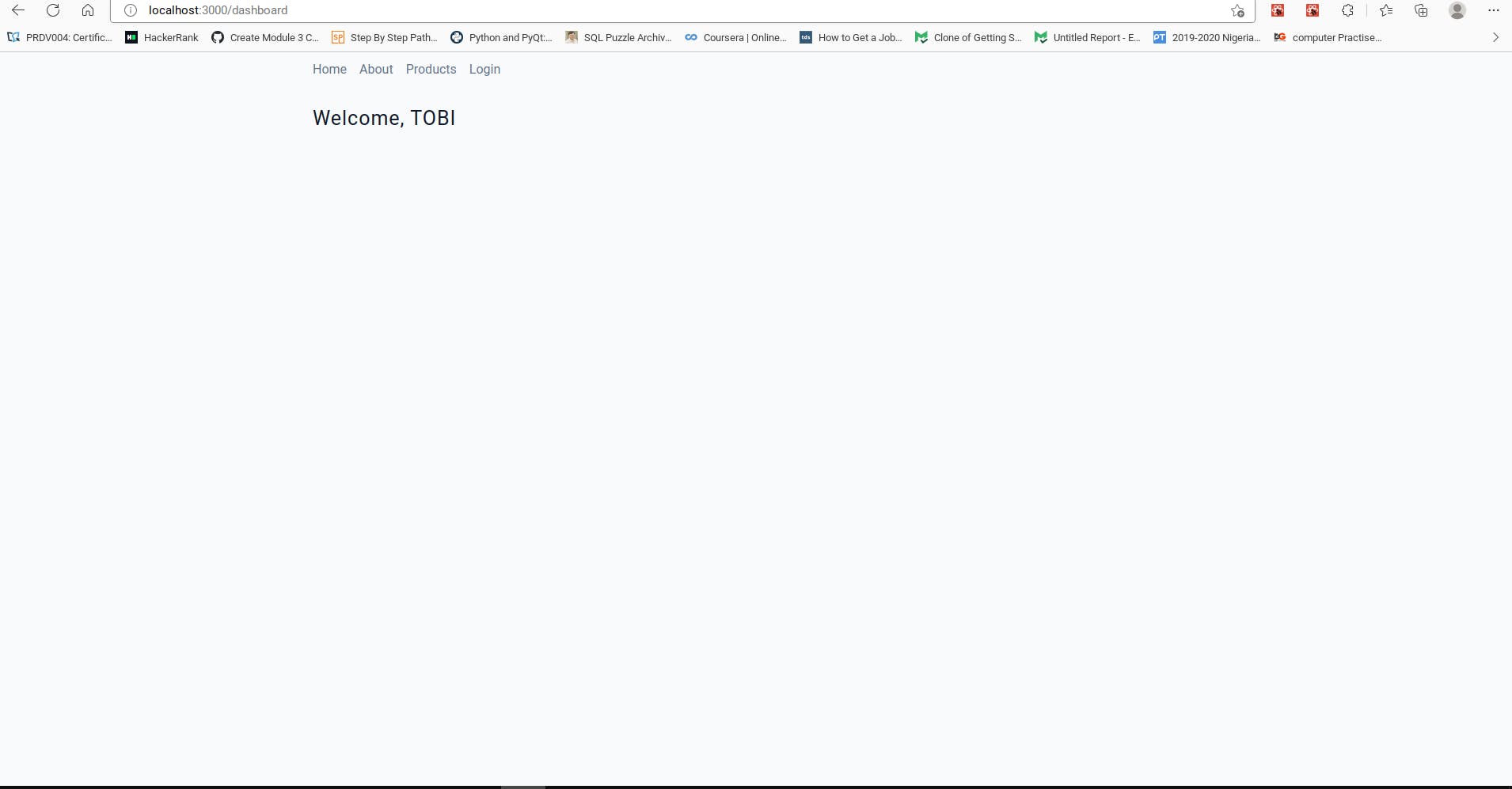React Router v6 with awesome features
I suggest you start with this my simple application tutorial. It's got everything you need to know to get up and running in React Router quickly.
Most modern React projects manage their dependencies using a package manager like npm or Yarn. To add React Router to an existing project, the first thing you should do is install the necessary dependencies with the tool of your choice:
install
npm install react-router-dom@6
First Pages
- App.js
import { BrowserRouter, Routes, Route } from 'react-router-dom';
function App() {
return (
<BrowserRouter>
<Routes>
<Route path='/' element={<div>home page</div>} />
<Route
path='testing'
element={
<div>
<h2>testing </h2>
</div>
}
/>
</Routes>
</BrowserRouter>
);
}
export default App;

Components
- app.js
import { BrowserRouter, Routes, Route } from 'react-router-dom';
function App() {
return (
<BrowserRouter>
<Routes>
<Route path='/' element={<div>home page</div>} />
<Route
path='testing'
element={
<div>
<h2>testing </h2>
</div>
}
/>
</Routes>
</BrowserRouter>
);
}
export default App;
Links
A <Link> is an element that lets the user navigate to another page by clicking or tapping on it. In react-router-dom, a <Link> renders an accessible <a> element with a real href that points to the resource it's linking to. This means that things like right-clicking a <Link> work as you'd expect. You can use <Link reloadDocument> to skip client side routing and let the browser handle the transition normally (as if it were an <a href>).
- Home.js, About.js
import { Link } from 'react-router-dom';
const Home = () => {
return (
<div>
<h2>Home Page</h2>
<Link to='/about' className='btn'>
About
</Link>
<a href="">
</div>
);
};
export default Home;
Error Page
- App.js
import { Link } from 'react-router-dom';
const Error = () => {
return (
<section className='section'>
<h2>404</h2>
<p>page not found</p>
<Link to='/'>back home</Link>
</section>
);
};
export default Error;
- Error.js

import { Link } from 'react-router-dom';
const Error = () => {
return (
<section className='section'>
<h2>404</h2>
<p>page not found</p>
<Link to='/'>back home</Link>
</section>
);
};
export default Error;
Nested Pages
- will refactor few times
- App.js
function App() {
return (
<BrowserRouter>
<Routes>
<Route path='/' element={<Home />}>
<Route path='about' element={<About />} />
<Route path='products' element={<Products />} />
<Route path='*' element={<Error />} />
</Route>
</Routes>
</BrowserRouter>
);
}
Shared Layout
- Home.js
import { Link, Outlet } from 'react-router-dom';
const Home = () => {
return (
<section className='section'>
<h2>Home Page</h2>
<Outlet />
</section>
);
};
export default Home;
Navbar
- Navbar.js
``javascript import { Link } from 'react-router-dom';
const Navbar = () => { return (
Home About Products ); }; export default Navbar;```- Home.js
import { Link, Outlet } from 'react-router-dom';
import Navbar from '../components/Navbar';
const Home = () => {
return (
<>
<Navbar />
<section className='section'>
<Outlet />
</section>
</>
);
};
export default Home;
Index Routes
Index routes render in the parent routes outlet at the parent route's path.
Index routes match when a parent route matches but none of the other children match.
Index routes are the default child route for a parent route.
Index routes render when the user hasn't clicked one of the items in a navigation list yet.
copy Home.js content
SharedLayout.js
import { Link, Outlet } from 'react-router-dom';
import Navbar from '../components/Navbar';
const SharedLayout = () => {
return (
<>
<Navbar />
<section className='section'>
<Outlet />
</section>
</>
);
};
export default SharedLayout;
- Home.js
const Home = () => {
return (
<section className='section'>
<h2>Home Page</h2>
</section>
);
};
export default Home;
- App.js
function App() { return ( <BrowserRouter> <Routes> <Route path='/' element={<SharedLayout />}> <Route index element={<Home />} /> <Route path='about' element={<About />} /> <Route path='products' element={<Products />} /> <Route path='*' element={<Error />} /> </Route> </Routes> </BrowserRouter> ); }
NavLink
A <NavLink> is a special kind of <Link> that knows whether or not it is "active". This is useful when building a navigation menu such as a breadcrumb or a set of tabs where you'd like to show which of them is currently selected. It also provides useful context for assistive technology like screen readers.
By default, an active class is added to a <NavLink> component when it is active. This provides the same simple styling mechanism for most users who are upgrading from v5. One difference as of v6.0.0-beta.3 is that activeClassName and activeStyle have been removed from NavLinkProps. Instead, you can pass a function to either style or className that will allow you to customize the inline styling or the class string based on the component's active state. You can also pass a function as children to customize the content of the <NavLink> component based on their active state, specially useful to change styles on internal elements.
NavLink(style)
- styledNavbar.js
import { NavLink } from 'react-router-dom';
<nav className='navbar'>
<NavLink
to='/about'
style={({ isActive }) => {
return { color: isActive ? 'red' : 'grey' };
}}
>
Home
</NavLink>
</nav>;
NavLink (className)
- StyledNavbar.js
<nav className='navbar'>
<NavLink
to='/'
className={({ isActive }) => (isActive ? 'link active' : 'link')}
>
Home
</NavLink>
</nav>
Reading URL Params
- App.js
function App() {
return (
<BrowserRouter>
<Routes>
<Route path='/' element={<SharedLayout />}>
<Route index element={<Home />} />
<Route path='about' element={<About />} />
<Route path='products' element={<Products />} />
<Route path='products/:productId' element={<SingleProduct />} />
<Route path='*' element={<Error />} />
</Route>
</Routes>
</BrowserRouter>
);
}
Single Product

- SingleProduct.js
import { Link, useParams } from 'react-router-dom';
import products from '../data';
const SingleProduct = () => {
const { productId } = useParams();
return (
<section className='section product'>
<h2>{productId}</h2>
<Link to='/products'>back to products</Link>
</section>
);
};
export default SingleProduct;
Products Page
- Products.js

import { Link } from 'react-router-dom';
import products from '../data';
const Products = () => {
return (
<section className='section'>
<h2>products</h2>
<div className='products'>
{products.map((product) => {
return (
<article key={product.id}>
<h5>{product.name}</h5>
<Link to={`/products/${product.id}`}>more info</Link>
</article>
);
})}
</div>
</section>
);
};
export default Products;
Single Product
- SingleProduct.js
import { Link, useParams } from 'react-router-dom';
import products from '../data';
const SingleProduct = () => {
const { productId } = useParams();
const product = products.find((product) => product.id === productId);
const { image, name } = product;
return (
<section className='section product'>
<img src={image} alt={name} />
<h5>{name}</h5>
<Link to='/products'>back to products</Link>
</section>
);
};
export default SingleProduct;
Navigate
A <Navigate> element changes the current location when it is rendered. It's a component wrapper around useNavigate, and accepts all the same arguments as props.
Note: Having a component-based version of the
useNavigatehook makes it easier to use this feature in a React.Component subclass where hooks are not able to be used.
- App.js
function App() {
const [user, setUser] = useState(null);
return (
<BrowserRouter>
<Routes>
<Route path='/' element={<SharedLayout />}>
<Route index element={<Home />} />
<Route path='about' element={<About />} />
<Route path='products' element={<Products />} />
<Route path='products/:productId' element={<SingleProduct />} />
<Route path='login' element={<Login setUser={setUser} />} />
<Route path='dashboard' element={<Dashboard user={user} />} />
<Route path='*' element={<Error />} />
</Route>
</Routes>
</BrowserRouter>
);
}
- Login.js

import { useState } from 'react';
import { useNavigate } from 'react-router-dom';
const Login = ({ setUser }) => {
const [name, setName] = useState('');
const [email, setEmail] = useState('');
const navigate = useNavigate();
const handleSubmit = async (e) => {
e.preventDefault();
if (!name || !email) return;
setUser({ name: name, email: email });
navigate('/dashboard');
};
- Dashboard.js

const Dashboard = ({ user }) => {
return (
<section className='section'>
<h4>Hello, {user?.name}</h4>
</section>
);
};
export default Dashboard;
Protected Route
- App.js
<Route
path='dashboard'
element={
<ProtectedRoute user={user}>
<Dashboard user={user} />
</ProtectedRoute>
}
/>
- ProtectedRoute.js
import { Navigate } from 'react-router-dom';
const ProtectedRoute = ({ children, user }) => {
if (!user) {
return <Navigate to='/' />;
}
return children;
};
export default ProtectedRoute;
get full source code as a boilerplate please remember to star
